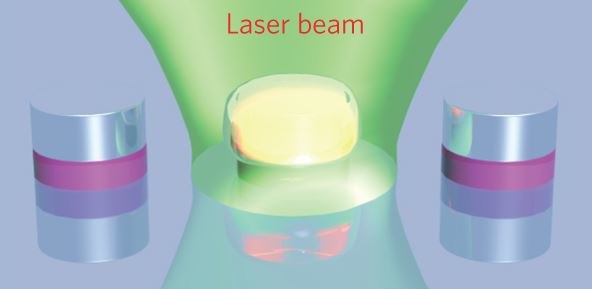Scrona, a spin-off company of the ETH Zurich, applied nanoscale 3D printing technology to print the world's smallest 3D printed color image "clownfish" on the size of the hairline cross section (0.0092 mm2), creating a new Guinness World Record. Almost at the same time, a research team from the Danish Polytechnic University disclosed another nanoscale fine laser printing technology capable of laser dot printing on the surface of a hairline cross section with an astonishing 127,000 DPI resolution.

This fine printing can print microscopic text or images. The printing needs to be performed on the surface of a customized nanostructure with columnar nano-pixel dots with a diameter of 100 nanometers arranged in rows and columns. The printing surface is coated with a layer of aluminum foil with a thickness of 20 nanometers. When the aluminum foil is swept by nano-scale laser pulses, it can accurately melt at the pixel and change color. Professor N. Asger Mortensen, one of the co-authors of the research paper, explained how this technology prints colors. “The tiny change in the geometric properties of the columnar nanopixels reflects the way they absorb light. The color is formed if the columnar pixels are absorbed. Blu-ray, the surface will show more red."

Prof. Anders Kristensen, co-author of another research paper, said that with the combination of data technology, the printing technology can record serial numbers, bar codes and other information. Applications that use this type of printing technology to print labels will be difficult to duplicate and can be used for product anti-counterfeiting identification.
Manufacturing Industry Lighting
Industrial lighting is a lighting solution designed specifically for manufacturing environments. In the manufacturing industry, a good lighting solution is essential to improve production efficiency, ensure work safety and create a comfortable working environment.
Manufacturing lighting needs to meet a range of specific needs. First, there are high lighting requirements for factory lighting, because manufacturing environments often require a lot of light to ensure that employees can see details clearly when carrying out assembly, inspection, and other tasks. Second, reliability and durability are key, as manufacturing environments can have harsh conditions such as dust, vibration and high temperatures. Therefore, it is very important to use production lighting equipment with high impact resistance, dustproof, waterproof and other characteristics.
LED lighting technology has been widely used in warehouse lighting. LED lamps have the advantages of high brightness, long life, low energy consumption and low maintenance costs, which can provide efficient and reliable lighting solutions for the manufacturing industry. In addition, the intelligent control system can achieve dimming and color temperature and other functions, according to different work needs to flexibly adjust, improve energy efficiency.
Through rational planning and application of manufacturing lighting solutions, production efficiency, quality control and employee safety can be improved. Proper lighting reduces eye strain, improves accuracy, and ensures that employees can operate safely during the course of their work. The design of manufacturing lighting should consider factors such as environmental characteristics, task requirements, energy efficiency and reliability to create a safe, efficient and comfortable manufacturing environment.Manufacturing Lighting, Factory Lighting, Production Lighting, LED Lighting Technology, Warehouse Lighting
SHENZHEN LITEHOME OPTOELECTRONIC TECHNOLOGY CO., LTD. , https://www.litehomelight.com